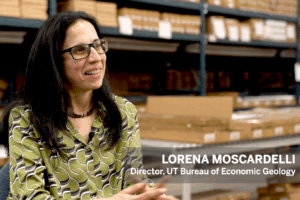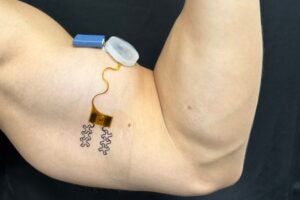AUSTIN, Texas—A sophisticated mapping process that combines laser scanning and satellite global positioning technology holds new hope for lessening storm damage in hurricane-prone areas, experts say.
The Bureau of Economic Geology, a research unit of The University of Texas at Austin, has been collaborating on a project to develop high-resolution maps for areas of Honduras at risk of floods from tropical storms. The bureau and UT Austin’s Center for Space Research will be using the same technology to survey the Texas Gulf Coast in May.
In 1998, Honduras and other Central American nations experienced severe damage from Hurricane Mitch, which killed more than 11,000 people, destroying roads, bridges and crops. As part of the Hurricane Mitch Reconstruction Program, the Bureau of Economic Geology is working with the U.S. Geological Survey (USGS) and the U.S. Agency for International Development (USAID) to map 15 areas in Honduras considered to be at high risk of flooding.
The UT Austin team includes Dr. James C. Gibeaut, a research associate; Dr. Roberto Gutierrez and Rebecca Smyth, both research scientist associates; and Dr. Andrew Warne, a research associate.
Beginning May 15, UT Austin researchers will begin using laser scanning for an aerial survey of beaches and dunes along the entire Texas Gulf Coast. The Gulf Coast survey is supported by NASA and the Texas Coastal Management Program through a grant from the National Oceanic and Atmospheric Administration (NOAA) as part of efforts to mitigate beach erosion problems. Gibeaut said the Texas survey would help determine “how we manage our shoreline, where we decide to build and where we decide to leave things natural. It also will help determine where to distribute resources to combat beach erosion.
Gibeaut said the actual Texas survey should take about a week, with analysis of the findings to be completed by the end of the year. “These maps will determine the position of the shoreline and compare that position to where it was as far back as 50 years ago. We will determine how much the shoreline has moved and where it is moving. We will map areas particularly susceptible to hurricane damage,” Gibeaut said.
The maps being developed for Honduran government agencies and municipal officials will be available in September. The maps can be used for computer modeling to aid bridge reconstruction as well as to determine where flood walls, levees or better land-use planning might help lessen storm damage in vulnerable areas.
Flooding and landslides from Hurricane Mitch destroyed 89 major bridges and countless smaller ones, and dumped so much sediment into rivers that stream channels and their flow characteristics have changed. Narrowed channels mean less space for water to flow through and that means flooding problems even from smaller rainfalls, Gibeaut said. Bridges must be built differently because the channels are different.
Gibeaut explained that both the Texas and Honduran mapping projects are based on three types of technology: satellite Global Positioning System (GPS) technology, Light Detection and Ranging (LIDAR) technology and a measuring device that records variations in the movement of the aircraft. The LIDAR equipment is attached to the bottom of a fixed-wing aircraft. During the fight, the laser sweeps back and forth over the area to be mapped, determining the distance to the ground.
“The neat thing about this is we fire the laser 25,000 times per second. And that means we can get data points on the ground less than three feet apart. As we fly along, we are essentially collecting a continuous data set of the topography,” Gibeaut explained. “This is technology originally developed by NASA that is more detailed and accurate than ever before.”
Instruments aboard the plane and instruments monitored by a survey team on the ground collect the satellite GPS (Global Positioning System) data during the flight. This allows the exact horizontal and vertical position of the aircraft to be determined for each second it is in the air. Gibeaut said when this information is combined with the distance to the ground determined by the laser and the tilt of the aircraft recorded by the measuring device, the position of the ground, vegetation, buildings or whatever the laser hits can be determined.
Researchers said it would have taken months to survey river systems in Honduras using conventional ground survey methods. In contrast, LIDAR and GPS technology allowed them to gather the necessary information on stream channels in a matter of days, producing data for flood risk maps with much higher resolution. The UT Austin team worked in Honduras in early March, flying a total of 70 hours at relatively low levels — often 2,500 feet — in mountainous territory.
Gibeaut said after each Honduran flight, a second team in Tegucigalpa, the capital city, merged the data collected by the aircraft with the data collected on the ground to make sure each area was adequately surveyed. Each spot illuminated by the laser could be calculated with an accuracy of 15 centimeters (about 6 inches). The extremely detailed information on variations in elevation provided by the maps can be used to produce models, or river flooding scenarios, to determine which parts of the communities may be at higher risk for flooding.
For more information, contact Dr. James C. Gibeaut of the Bureau of Economic Geology at (512) 471-0344 or jim.gibeaut@beg.utexas.edu . The UT Austin Bureau of Economic Geology Website is www.utexas.edu/research/beg.



